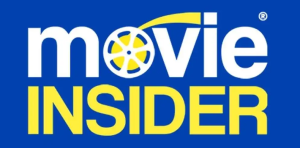First Man 2018

In the lead-up to the 1969 moon landing, skilled test pilot Neil Armstrong dedicates himself to NASA's ambitious program. He endures rigorous training and perilous test flights, pushing the boundaries of human achievement. The film chronicles his journey and the sacrifices made as he prepares for the historic Apollo 11 mission alongside Buzz Aldrin and Michael Collins. On July 20, 1969, the world watches as Armstrong takes humanity's first steps on the lunar surface.
Does First Man have end credit scenes?
No!
First Man does not have end credit scenes. You can leave when the credits roll.
Meet the Full Cast and Actors of First Man
Explore the complete cast of First Man, including both lead and supporting actors. Learn who plays each character, discover their past roles and achievements, and find out what makes this ensemble cast stand out in the world of film and television.

Shea Whigham
Gus Grissom

Kyle Chandler
Deke Slayton

Corey Stoll
Buzz Aldrin

Perla Middleton

Ciarán Hinds
Bob Gilruth

Christopher Abbott
Dave Scott

Claire Foy
Janet Armstrong

Jon Bernthal

Lukas Haas
Mike Collins

Aurelien Gaya

Brian d'Arcy James
Joe Walker

Cory Michael Smith
Roger Chaffee

Ethan Embry
Pete Conrad

Jason Clarke
Ed White

Olivia Hamilton
Pat White

Pablo Schreiber
James Lovell

Patrick Fugit
Elliot See

Philip Boyd

Ryan Gosling
Neil Armstrong
External Links and Streaming Options
Discover where to watch First Man online, including streaming platforms, rental options, and official sources. Compare reviews, ratings, and in-depth movie information across sites like IMDb, TMDb, Rotten Tomatoes or Metacritic.
Ratings and Reviews for First Man
See how First Man is rated across major platforms like IMDb, Metacritic, and TMDb. Compare audience scores and critic reviews to understand where First Man stands among top-rated movies in its genre.

The Movie Echo Score
First Man demonstrates notable strengths in visual design and immersive spectacle, anchored by thoughtful direction and production craft. The character portrayals are subtle yet engaging, driven by Gosling’s restraint and Foy’s emotional warmth. The narrative balances personal tragedy with methodical mission sequences, resulting in measured pacing. Sensory elements stand out, though the deliberate rhythm tempers rewatch appeal. Net, the film offers a compelling viewing experience.
The Movie Echo Score Breakdown for First Man

Art & Craft
The film excels in its visual craftsmanship, particularly its cinematography and production design. In terms of direction, Chazelle utilizes varied formats—16mm, 35mm and IMAX 70mm—to heighten immersion, supported by crisp editing and grounded lighting. The space sequences are staged with precise framing and visual cohesion. Overall, the artistic elements deliver a compelling visual experience.

Character & Emotion
When it comes to character depth, the performances are consistently nuanced and emotionally resonant. Gosling’s reserved portrayal of Neil Armstrong is balanced by Foy’s empathetic turn, which anchors the interpersonal drama. Supporting roles contribute additional texture, even as some moments emphasize stoicism over accessibility. Net, the acting elevates the film’s human dimension.

Story & Flow
In terms of plot coherence, First Man adopts a straightforward structure that emphasizes personal trials over political context. The narrative interweaves the protagonist’s family tragedy with mission milestones, creating emotional stakes. Pacing is measured, though a midsection focused on briefings can feel deliberate. Ultimately, the story engages through its intimate approach more than through high drama.

Sensory Experience
Regarding sensory experience, the score and sound design combine to heighten tension, especially during cockpit scenes. The soundtrack’s theremin motifs and pounding sound effects underscore the film’s outward thrust, while visual style remains consistent from quiet interiors to lunar vistas. Viewing in IMAX further amplifies the immersive quality. Overall, the sensory elements are a standout.

Rewatch Factor
For rewatch value, the film offers striking visual moments and emotional undercurrents that encourage a second viewing. The meticulous production detail and sequences of low-gravity simulation retain their impact on subsequent viewings. However, its deliberate pacing and inward focus may limit its appeal for frequent revisits. Net, the replay potential is modest but notable.

84
Metascore
7.4
User Score


87%
TOMATOMETER

68%
User Score

7.3 /10
IMDb Rating

70
%
User Score

3.7
From 741 fan ratings

3.40/5
From 5 fan ratings
Take the Ultimate First Man Movie Quiz
Challenge your knowledge of First Man with this fun and interactive movie quiz. Test yourself on key plot points, iconic characters, hidden details, and memorable moments to see how well you really know the film.
First Man Quiz: Test your knowledge on the gripping story of Neil Armstrong and the monumental events leading to the moon landing in 'First Man'.
What year does Neil Armstrong pilot the X-15 craft?
1961
1965
1967
1970
Show hint
Awards & Nominations for First Man
Discover all the awards and nominations received by First Man, from Oscars to film festival honors. Learn how First Man and its cast and crew have been recognized by critics and the industry alike.
91st Academy Awards 2019
Production Design
Sound Editing
Sound Mixing
Visual Effects
72nd British Academy Film Awards 2019

Best Adapted Screenplay
Best Cinematography
Best Editing
Best Production Design
Best Sound
Best Special Visual Effects
24th Critics' Choice Awards 2019
Best Picture



Best Adapted Screenplay
Best Cinematography
Best Production Design
Best Editing
Best Visual Effects
Best Score
76th Golden Globe Awards 2019

Best Original Score
Full Plot Summary and Ending Explained for First Man
Read the complete plot summary of First Man, including all major events, twists, and the full ending explained in detail. Explore key characters, themes, hidden meanings, and everything you need to understand the story from beginning to end.
In 1961, NASA test pilot Neil Armstrong takes to the skies in the X-15 rocket plane. He skillfully pushes the aircraft to the edge of space, reaching an impressive altitude of 140,000 feet, highlighting the challenges of winged flight in the realm beyond our atmosphere. However, during his return, he inadvertently encounters turbulence at 115,000 feet. Displaying remarkable composure under pressure, he utilizes the Thrusters to flip the plane upside down, leveraging the momentum from the maneuver to safely re-enter the atmosphere. Although he manages to land firmly in the Mojave Desert, concerns arise among his peers about his recent string of mishaps—three incidents in the span of just a month—which they believe stem from personal distractions, leading to his temporary grounding.
His colleague, Joe Walker, also a test pilot, witnesses Armstrong’s struggles. Amidst these professional challenges, Neil faces a heartbreaking personal crisis; his two-and-a-half-year-old daughter, Karen, is battling a brain tumor. In his desperation to find a solution, he meticulously documents her symptoms while fervently searching for treatments, only to be devastated when she passes away shortly after.
In the wake of this tragedy, Armstrong decides to join Project Gemini and is welcomed into NASA Astronaut Group 2. With a solid engineering background, he attracts the attention of Bob Gilruth](/actor/ciarn-hinds), the first director of NASA’s Manned Spacecraft Center. In their interview, Neil candidly acknowledges his daughter’s loss and aligns himself with Wernher von Braun’s strategy for lunar exploration, emphasizing a plan that involves placing the primary command module in orbit before attempting to land.
Accompanied by his wife Janet and their son Rick to Houston, Neil quickly forms bonds with fellow astronauts like Elliot See and Ed White, the pioneer who became the first American to walk in space. As they engage in the demanding training required for Project Apollo, they find themselves racing against the clock, as the Soviet Union has already achieved several milestones in the Space Race.
In 1964, Armstrong tackles the rigorous training regimen that involves mastering multi-axle simulators designed to test their endurance and stability under pressure. Demonstrating his commitment, Neil is the first to step up to the challenge, ultimately overcoming initial failures. The training includes advanced rocketry sessions, and later that year, Neil and Janet welcome a second son, Mark.
By 1965, the family settles into their new lives in Houston, waiting for mission assignments while the Soviets continue to mark their victories in space exploration. After Ed White’s scheduled EVA is outmatched by a Soviet mission, Neil learns he will command Gemini 8 with David Scott as his co-pilot. However, tragedy strikes when Elliot See and Charles Bassett lose their lives in a T-38 crash, a loss that weighs heavily on Armstrong’s heart.
As Gemini 8 takes to the skies, they successfully perform the docking exercise but not without challenges. After initially coordinating with their unmanned target, the spacecraft begins to spin out of control. Displaying his well-known calmness, Neil employs the Reentry Control System Thrusters to avert disaster, leading to the mission’s safe return despite initial backlash against them, which NASA later addresses as a technical malfunction.
In a further blow, the Apollo 1 crew, which includes Gus Grissom and Roger Chaffee, tragically perishes in a fire during a launch rehearsal test. This devastating news reaches Neil while he is at a White House event representing NASA.
The following year poses yet another perilous situation where Armstrong narrowly avoids death during an ejection from a Lunar Landing Research Vehicle. However, his resilience and dedication lead to him being selected as the commander for the historic Apollo 11 mission. As the mission approaches, tension grows between Neil and his family, particularly as Janet pressures him to confront the real risks involved in the mission before saying goodbye to their young sons.
On launch day, Apollo 11 embarks on its journey, reaching the Moon by the fourth day. As Neil and Buzz Aldrin maneuver the Lunar Module Eagle, a landing attempt becomes urgent when they spot a hazardous field of boulders below. Taking manual control of the spacecraft, Neil lands successfully at a secondary site, famously declaring, > “That’s one small step for man, one giant leap for mankind,” as he plants his foot on the lunar surface. In a poignant moment, he leaves his daughter’s bracelet in the Little West crater, a symbolic gesture of love and loss.
Completing their mission, the astronauts endure quarantine upon their return, during which they reflect on their experiences, watching the resonant footage of President John F. Kennedy’s iconic speech, “We choose to go to the Moon,” even as Neil and Janet share a tender moment amidst the chaos of their historical achievements.
Uncover the Details: Timeline, Characters, Themes, and Beyond!

Coming soon on iOS and Android
The Plot Explained Mobile App
From blockbusters to hidden gems — dive into movie stories anytime, anywhere. Save your favorites, discover plots faster, and never miss a twist again.
Sign up to be the first to know when we launch. Your email stays private — always.
Watch Trailers, Clips & Behind-the-Scenes for First Man
Watch official trailers, exclusive clips, cast interviews, and behind-the-scenes footage from First Man. Dive deeper into the making of the film, its standout moments, and key production insights.
Cars Featured in First Man
Explore all cars featured in First Man, including their makes, models, scenes they appear in, and their significance to the plot. A must-read for car enthusiasts and movie buffs alike.
First Man Themes and Keywords
Discover the central themes, ideas, and keywords that define the movie’s story, tone, and message. Analyze the film’s deeper meanings, genre influences, and recurring concepts.
First Man Other Names and Titles
Explore the various alternative titles, translations, and other names used for First Man across different regions and languages. Understand how the film is marketed and recognized worldwide.
Similar Movies To First Man You Should Know About
Browse a curated list of movies similar in genre, tone, characters, or story structure. Discover new titles like the one you're watching, perfect for fans of related plots, vibes, or cinematic styles.
Quick Links: Summary, Cast, Ratings, More

What's After the Movie?
Not sure whether to stay after the credits? Find out!
Explore Our Movie Platform
New Movie Releases (2025)
Famous Movie Actors
Top Film Production Studios
Movie Plot Summaries & Endings
Major Movie Awards & Winners
Best Concert Films & Music Documentaries
Movie Collections and Curated Lists
© 2025 What's After the Movie. All rights reserved.









































